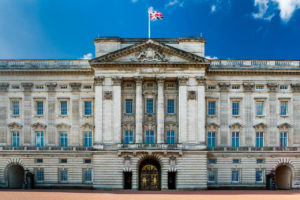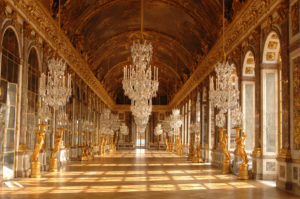From the Pharaohs to Queen Victoria, royal dwellings have been symbols of how rulers think about power.
Every summer, Queen Elizabeth II opens the state rooms of Buckingham Palace to the public. This year’s opening features an exhibition that I curated, “Queen Victoria’s Palace,” the result of a three-year collaboration with Royal Collection Trust. The exhibition uses paintings, objects and even computer-generated imagery to show how Victoria transformed Buckingham Palace into both a family home and the headquarters of the monarchy. In the process, she modernized not only the building itself but also the relationship between the Royal Family and the British people.

Plenty of rulers before Victoria had built palaces, but it was always with a view to enhancing their power rather than sharing it. Consider Amarna in Egypt, the temple-palace complex created in the 14th century B.C. by Amenhotep IV, better known as Akhenaten. Supported by his beautiful wife Nefertiti, the heretical Akhenaten made himself the head of a new religion that revered the divine light of the sun’s disk, the Aten.
The Great Palace reflected Akhenaten’s megalomania: The complex featured vast open air courtyards where the public was required to engage in mass worship of the Pharaoh and his family. Akhenaten’s palace was hated as much as his religion, and both were abandoned after his death.
Weiyang, the Endless Palace, built in 200 B.C. in western China by the Emperor Gaozu, was also designed to impart a religious message. Until its destruction in the 9th century by Tibetan invaders, Weiyang extended over two square miles, making it the largest imperial palace in history. Inside, the halls and courtyards were laid out along specific axial and symmetrical lines to ensure that the Emperor existed in harmony with the landscape and, by extension, with his people. Each chamber was ranked according to its proximity to the Emperor’s quarters; every person knew his place and obligations according to his location in the palace.
 Western Europe had nothing comparable to Weiyang until King Louis XIV built the Palace of Versailles in 1682. With its unparalleled opulence—particularly the glittering Hall of Mirrors—and spectacular gardens, Versailles was a cult of personality masquerading as architecture. Louis, the self-styled Sun King at the center of this artificial universe, created a living stage where seeing and being seen was the highest form of social currency.
Western Europe had nothing comparable to Weiyang until King Louis XIV built the Palace of Versailles in 1682. With its unparalleled opulence—particularly the glittering Hall of Mirrors—and spectacular gardens, Versailles was a cult of personality masquerading as architecture. Louis, the self-styled Sun King at the center of this artificial universe, created a living stage where seeing and being seen was the highest form of social currency.
The offstage reality was grimmer. Except for the royal family’s quarters, Versailles lacked even such basic amenities as plumbing. The cost of upkeep swallowed a quarter of the government’s annual tax receipts. Louis XIV’s fantasy lasted a century before being swept away by the French Revolution in 1789.
Although Victoria would never have described herself as a social revolutionary, the many changes she made to Buckingham Palace were an extraordinary break with the past. From the famous balcony where the Royal Family gathers to share special occasions with the nation, to the spaces for entertaining that can welcome thousands of guests, the revitalized palace created a more inclusive form of royal architecture. It sidelined the old values of wealth, lineage, power and divine right to emphasize new ones based on family, duty, loyalty and patriotism. Victoria’s palace was perhaps less awe-inspiring than its predecessors, but it may prove to be more enduring.





